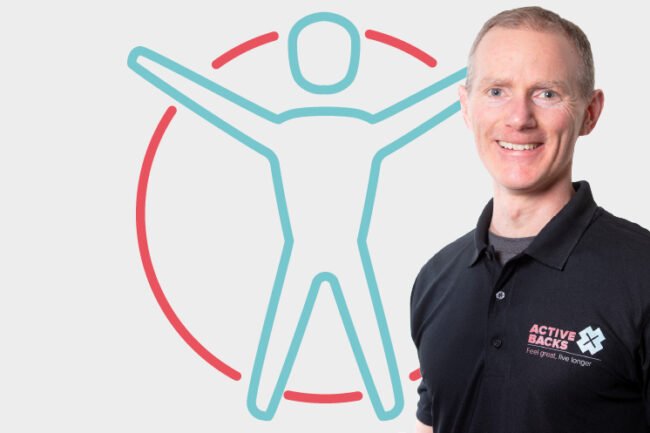Rest in bed with lower back pain / sciatica
Rest in bed with lower back pain / sciatica
This episode is entitled “Rest in bed with lower back pain / sciatica”. You will learn how to:
- Apply the “use it but don’t abuse it” rule to rest in bed with lower back pain / sciatica
- Create a program of rest and rehabilitation

Apply the “use it but don’t abuse it” rule to rest in bed with lower back pain / sciatica
If you don’t use your physical or mental capacities, you lose control over them. After a severe onset of lower back pain, the parts of your brain that control the muscles in your lower back and the motor cortex start to lose connections. The muscles weaken and waste. Chronic and persistent lower back pain sufferers tend to have a low or lesser amount of muscle in their lower backs. They have a higher amount of fatty infiltration. The muscles are smaller and they have more fat in them and therefore are weaker. The don’t abuse it bit means that if you do things that hurt, you are actually aggravating your injury and preventing it from healing. You will also increase the sensitivity of the nerve pathways that tell your brain you have a problem. You might call them pin pathways.
Create a program of rest and rehabilitation
To excessively rest in bed with lower back pain / sciatica is not good. Stay active and do your normal activities of daily living as much as you can, but don’t abuse it. Find a happy medium between rest and rehabilitation. Document how you feel when you walk, go up and down stairs, sit in a chair. List the things you do and how long you can do it for before it hurts. If you can only go up three steps before your back hurts, your limit is two steps. If you can walk for a hundred yards and that’s comfortable, but if you were to walk 150 yards your back becomes painful, I would step down a hundred yards.
Write down a brief rest and see if that’s enough for you. Lying down and getting back up can be really challenging when you rest in bed with lower back pain / sciatica. You may feel worse on those movements, that first bit of weightbearing. Lean on something and take your weight off the leg, or do the wobbling exercise. Use the action of getting up and lying down as a rehabilitation. You have a list of activities and you know how long you can do each one before the pain increases. You’ve given an estimate as to how long you could rest for, give yourself 15 minutes of rest, rather than 2 hours. If you find that it doesn’t settle down and you don’t feel any better, push that out for 20 or 30 minutes at a time.
If you have injured tissues in your lower back / sciatica, work out how much time you need to rest in bed to heal. Have a little rest, do a few reliever exercises and do your tasks. It doesn’t work to work for six hours, then have a two hour rest and do 10 minutes of exercises. You’re far better to have four 15 minute rests in the day than you are to have a one hour solid block of rest. You can start at 15 minutes of rest, 5 minutes of reliever exercises and 40 minutes of activity for a few days. Then cut down the rest to 10 minutes, keep the relievers at 5 minutes, and do 45 minutes of tasks. Slowly reduce the length of the rest periods and increase your activity levels. Your rehabilitation program needs to be a slow progression.


